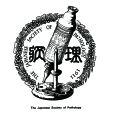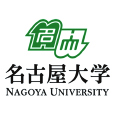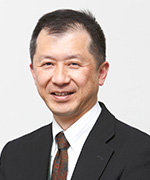It is my great pleasure and honor to host the 113th Annual Meeting of the Japanese Society of Pathology (JSP) as the President, which will be held at the Nagoya Congress Center in downtown Nagoya City from March 28 to 30, 2024. Nine years have already passed since our organization of this meeting in 2015, and this would be the first pure face-to-face meeting except for the training sessions after the break of COVID-19 pandemic. This meeting has been planned at the last week of March during the spring vacation period. We believe that this would be an excellent chance or the medical students and early-career resident physicians to attend the JSP annual meeting to scrutinize the extensive breadth of pathology as their future specialized area.
The theme of the 113th Annual Meeting of the JSP is “Passionate Pathology Supporting Medicine: From the Origin to Resilient Science.” Pathology started among medical sciences as an entity to solve the mechanisms of diseases that annoy people in those eras. Pathology is one of the departments that exists from the beginning of medical university established during the Meiji period. After the World War II, diagnostic pathology or surgical pathology was established in Japan by the recognition of the importance of pathologic diagnosis under microscope in clinical medicine. Registration of pathologists started as early as in 1970 in Japan and the department of diagnostic pathology has become independent in hospitals in 2008. And now, as many people are aware, not only routine microscopic diagnosis under hematoxylin and eosin staining but immunohistochemistry and even sequencing of specific genes out of formalin-fixed paraffin-embedded sections are essential for determining therapies of cancer patients as precision medicine. Pathology also play an important role in medical education, bridging basic medicine to clinical medicine and educating medical students with all the essential concepts of diseases and pathogenesis. Furthermore, we must not forget the spirit of pathology to pursue the etiology and pathogenesis of emerging diseases, such as COVID-19, and to develop therapies for those unsolved diseases. Here all kinds of new scientific technologies have been and are involved for pathological research. It is true that close observation under microscope has produced numerous novel concepts and has overcome the difficulties.
We have prepared 20 symposia or workshops in this meeting, considering the current situation in pathology. As awardees of Japan Pathology Award, Dr. Genichiro Ishii (National Cancer Center Research Institute), Prof. Sohei Kitazawa (Ehime University) and Prof. Hideki Wanibuchi (Osaka Metropolitan University) would provide us with special lectures on their own lifeworks. In addition, we have prepared special schemes, directed for women pathologists, foreign students, young researchers and medical students. We decided to make all the training sessions, including systemic diagnosis, organ-specific diagnosis, cutting-edge molecular pathology and autopsy sessions, on-demand web streaming in April to allow repeated study and prevent excessive congestion in the presentation rooms. As International sessions, we plan a symposium on ferroptosis and oxidative stress, and collaborative sessions with the British, the European and the Chinese Pathology societies. We invite especially the students and young researchers to participate in these international sessions. We also prepared workshops on novel medical research areas essential to extend our healthy lifetime, including Cardio-Oncology. Poster session by medical students in the afternoon of the final day is also a highlight of this meeting.
Aichi prefecture is the birth place of the three most important Sengoku warlords, Nobunaga Oda, Hideyoshi Toyotomi and Ieyasu Tokugawa. Its capital Nagoya is a city you can feel the taste of Samurai culture of Tokugawa era of 400 years. To let the participants recognize the flavor, we prepared a special lecture by Mr. Yoshitaka Tokugawa (Director of Tokugawa Art Museum and 22nd head of Owari Tokugawa family). Nagoya also presents a variety of B-grade gourmet, such as Taiwan ramen, Taiwan mazesoba, tebasaki, misokatsu, ankake-spaghetti, ogura toast, hitsu-mabushi and kishimen. Nagoya city is also rich in amusement places for the kids and youngsters. We recommend to come to Nagoya city with your family a little earlier and to enjoy sightseeing and shopping.
Finally, we would like to sincerely thank a number of companies and people for donation and cooperation for this conference. It would be our great pleasure if this meeting could contribute to the participants’ daily pathologic diagnosis, research activity as well as promotion of scientific progress and development in Japan. We also hope that this meeting would be the compass for the future of resident physicians and researchers and promote the further development of the Japanese Society of Pathology.



